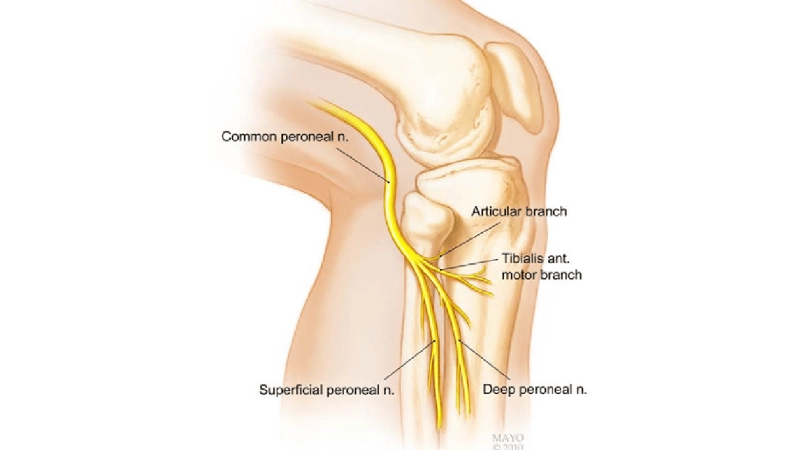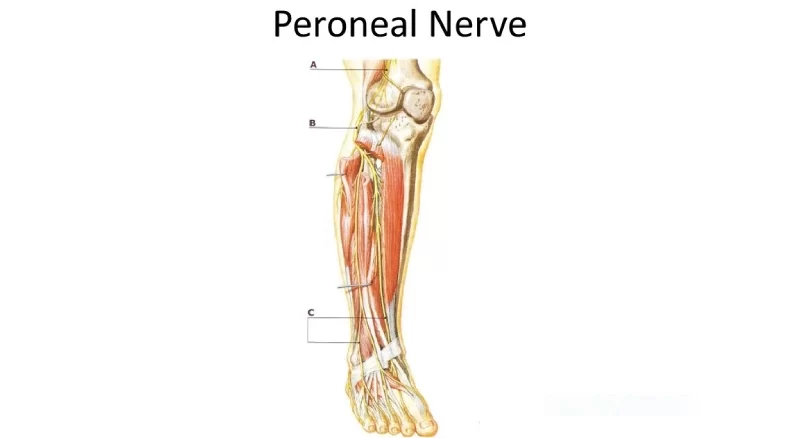We explained different types of foot conditions such as Posterior Heel Spur, foot Arthritis, … . Then we suggested that in order to Posterior Heel Spur treatment in Dubai visit Dr. Bijan Vali Elahi. In the following article we will talk about Nervus peronaeus communis, its symptoms and treatment of entrapment. As a matter of fact Nervus peronaeus communis (fibular neuropathy) is
A condition that consists of any small differences in diagnosis of foot drop, the pain or loss of sensation of the lower end part of a limb of the foot. Usually this foot condition influences sportsmen and could prevent their performance. Furthermore it can affect the life quality of people with occupations needing considerable squatting and kneeling. It is necessary to find the origin, spread, and causes of peroneal neuropathy entrapment.
What is the common peroneal nerve?
A short and narrow nerve that is placed in the posterior segment of the lower end part of a limb of the foot is called the common peroneal nerve. It happens as an extremity (terminal) limb of the sciatic nerve circa the top of the popliteal cavity.
This nerve moves inferoanterior through the popliteal cavity, to the top of the fibula. Since it gets to the anterior section of the leg, the nerve apportions into the superficial and deep peroneal nerve.
The superficial peroneal nerve is responsible for supplying the muscles of the leg sidelong section and processes sense to the both anterior and lateral side of the leg. While the deep peroneal nerve is responsible for providing the muscles of the leg frontal section and the backside of the foot.
Note: it’s possible that peroneal nerve entrapment occurs at the ankle. If ankle conditions become severe, performing ankle surgery in Dubai may be required.
✔️ Read More: Examine the causes of flat feet and the best way to treat it!
Joint peroneal nerve entrapment

Joint peroneal nerve entrapment commonly happens if the area of the nerve gets scar tissue. This condition may bring pain in a particular area (localized ache), numbness and lack of sensation over the frontal and sidelong aspects of the foot. It also can lead to faint of the foot in bending toward the back (dorsiflexion), toe stretch (visit a big toe surgeon in Dubai), and foot overturn. This condition may exist in extreme grades or it might get worse only by doing activity.
Troubles which may grow with this situations are:
- Reduced ability to walk
- Constant reduce in leg and feet feeling
- Constant faint or leg/foot paralysis
Causes of common peroneal nerve entrapment
As we mentioned above,The Nervus peronaeus communis is a divergence of the sciatic nerve that provides motion and sense to the lower leg, toes and foot. This condition might influence people with different ages.
In fact this situation is a sort of mononeuropathy (nerve hurt to a single one). Harm to the nerve interrupts the myelin sheath (coating on the axons of nerve cells). It is possible that the axon gets hurt, that is a more extreme injury.
Common causes include:
- Harm to the knee
- Breaking the fibula
- Applying a thick-set plaster mold
- Intersection the legs customarily
- Putting high boots on constantly
- Putting stress to the knee due to positions pending sleep or coma
- Getting hurt pending knee surgery or be in an terrible position during anesthesia time
Nervus peronaeus communis entrapment occur in the following people who are:
- Extremely thin
- Suffer from particular autoimmune situation
- Suffer from nerve harm from other medical disease like diabetes or alcohol abuse
- Suffer from Charcot-Marie-Tooth disorder
✔️ Read More: What does a hammer toe mean and how is it treated?
Symptoms of common peroneal nerve entrapment
If the nerve get hurt and cause dysfunction, symptoms are:
- Reduction of sensation, numbness, or feeling of tingling in the peak of the foot or the exterior section of the leg
- Dropping of foot
- “Slapping” walk
- Dragging of toes while walking
- Having troubles while walking
- Feebleness of the ankle or feet
- Lack of muscle pile
Diagnosis of peroneal nerve entrapment
Your doctor will perform a physical test that might show:
- Lack of muscle observe in the lower legs and feet
- Emaciation of the foreleg and feet muscles
- Having problems with moving up the foot and toes
Note: these tests will be done for foot Arthritis treatment in Dubai too.
✔️ Read More: What is gout? Cause and methods of treatment
Examine of nerve action consist of:
- Doing an examination of electrical action in muscles (Electromyography)
- Doing tests of nerve transmission in order to check the speed of electrical signals movement in a nerve
- Doing MRI
- Doing nerve ultrasound
Other possible examinations will be done according to the doubtful cause of nerve dysfunction, the symptoms and the way of their development. These examinations might consist of blood tests, scans and x-rays.
Treatment of peroneal nerve entrapment

The main goal of treatment of peroneal nerve entrapment is to cure mobility and self-sufficiency. Any sickness or other reason for the neuropathy must be treated. Putin pads on the knee can hinder more harm through crossing the legs. Do not forget to not cross the legs.
In some situations injection of corticosteroids in the region might decrease inflammation and stress on the nerve.
Performing Surgery might be helpful to decrease symptoms in some cases. It might be required:
- To release stress on the nerve in case the confusion is caused by stress on it.
- To take away tumors compression on the nerve
surgery is essential if:
- The dysfunction does not disappear
- Have troubles with movement
- Damage of the axon
Taking medicines
Taking over-the-counter painkillers, gabapentin, carbamazepine and … can help to control pain.
If taking pills does not work and the pain worsens, it is essential to visit a pain specialist to explore all options for pain release.
✔️ Read More: Heel spurs, its diagnosis and treatment approaches
Physical therapy
Doing physical exercises might help to enhance muscle strength.
Wearing orthopedic devices
Wearing devices such as braces, splints and orthopedic shoes could make the ability to walk better and stop contractures.
Conclusion
To prevent peroneal nerve entrapment try not to cross your legs or put stress on your knee. Cure harm to the leg and knee immediately. In case the cast, splint and other devices cause putting stress on the lower leg contact your provider as soon as possible.
In extreme situations nerve harm can cause constant disability. In sum, if you experience any signs of Nervus peronaeus communis entrapment visit your healthcare provider.




